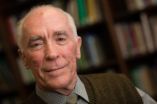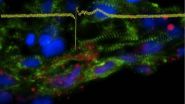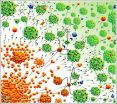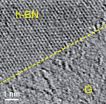(Press-News.org) Donors to biobanks – vast collections of human tissue samples that scientists hope will lead to new treatments for diseases – have a right to basic information about how their donations may be used, a Michigan State University ethicist argues in a new paper.
The idea behind biobanks is that a repository with hundreds of thousands of samples, each linked to medical records and other health information, can yield discoveries smaller data sets can't match. Once samples are collected, researchers in many fields can use the data repeatedly.
"More and larger biobanks are in many ways the future of health research," said Tom Tomlinson, director of MSU's Center for Ethics and Humanities in the Life Sciences. "Their rise as a research tool means that sooner or later – probably sooner – all of us will be participating in research that we know nothing whatsoever about."
Ethicists have typically viewed biobank donations through the lens of risk: Once someone has given a tissue sample and all identifying information is removed, later research risks no harm to them. Since they no longer need protection, donors usually sign blanket consent forms and receive no updates about how the tissue is used.
But people make donations in the hope of doing good, giving them an ongoing moral stake in what happens to their tissue samples, Tomlinson writes in the Hastings Center Report, a leading bioethics journal.
"Donors should have the information they need to decide if there are moral risks involved that might not be worth taking," he said.
For instance, surveys have found that some people may not donate to publicly funded biobanks if the research would lead to private commercial gain. Others may not want to be involved in research on controversial issues like cloning, or studies that reinforce negative racial stereotypes.
"It's hard to tell a person exactly how their donation will be used," Tomlinson said, "but what you can tell them is the range of uses to which it might be put."
Tomlinson offers specific steps biobanks should take to protect donors' rights. Among them:
Donors should get ongoing summaries of research projects, written in plain language.
Biobanks should inform donors when their tissue might be used in potentially controversial research.
Data-management systems should be in place to let donors withdraw their samples at any time if they take issue with the kinds of research the biobank supports.
INFORMATION:
Tomlinson's work was supported by the National Human Genome Research Institute, a branch of the National Institutes of Health.
Safeguards needed for tissue donors
2013-01-28
ELSE PRESS RELEASES FROM THIS DATE:
New LGBT Health journal launching in 2013
2013-01-28
New Rochelle, NY, January 28, 2013—Over 4 million adults in the United States identify as gay, lesbian, or bisexual and approximately 700,000 identify as transgender. An NIH-sponsored investigation by the Institute of Medicine (IOM) concluded that the health status and healthcare needs of this sizable population are poorly understood and likely inadequately met. A journal is urgently needed to support, promote, and address the unique healthcare needs of each population that comprises the LGBT community, in the United States and worldwide. LGBT Health, a new peer-reviewed ...
Best friends influence when teenagers have first drink
2013-01-28
Chances are the only thing you remember about your first swig of alcohol is how bad the stuff tasted. What you didn't know is the person who gave you that first drink and when you had it says a lot about your predisposition to imbibe later in life.
A national study by a University of Iowa-led team has found that adolescents who get their first drink from a friend are more likely to drink sooner in life, which past studies show makes them more prone to abusing alcohol when they get older. The finding is designed to help specialists predict when adolescents are likely to ...
Patients' own skin cells are transformed into heart cells to create 'disease in a dish'
2013-01-28
LA JOLLA, Calif., January 27, 2013 – Most patients with an inherited heart condition known as arrhythmogenic right ventricular dysplasia/cardiomyopathy (ARVD/C) don't know they have a problem until they're in their early 20s. The lack of symptoms at younger ages makes it very difficult for researchers to study how ARVD/C evolves or to develop treatments. A new stem cell-based technology created by 2012 Nobel Prize winner Shinya Yamanaka, M.D., Ph.D., helps solve this problem. With this technology, researchers can generate heart muscle cells from a patient's own skin cells. ...
Demagnetization by rapid spin transport
2013-01-28
For purposes of their research, the scientists irradiated two separate layered systems with ultrashort laser pulses on the order of just one hundred femtoseconds (10-15 s). One sample consisted essentially of a single thin layer of ferromagnetic nickel. By contrast, a second sample of this same nickel material was coated with a non-magnetic layer of gold. Only a mere 30 nanometers (10-9 m) thick, the gold layer swallowed up the lion's share of the laser light so that barely any light ended up reaching the nickel layer. In spite of this, the nickel layer's magnetization ...
Accelerating neutral atoms on a table top
2013-01-28
Charged particle accelerators have become crucially important to modern day life, be it in health care for cancer treatment or for answering important fundamental scientific questions like the existence of the HIGGS boson, the so called 'God particle'. In a simple picture, charged particles like electrons and protons are accelerated between two end plates across which an electrical voltage is applied. High energies need high voltages (millions and billions of volts) and long acceleration paths in giant sized machines – for instance the trillion volt machine called the 'large ...
Rice technique points toward 2-D devices
2013-01-28
HOUSTON – (Jan. 28, 2013) – Rice University scientists have taken an important step toward the creation of two-dimensional electronics with a process to make patterns in atom-thick layers that combine a conductor and an insulator.
The materials at play – graphene and hexagonal boron nitride – have been merged into sheets and built into a variety of patterns at nanoscale dimensions.
Rice introduced a technique to stitch the identically structured materials together nearly three years ago. Since then, the idea has received a lot of attention from researchers interested ...
Cities affect temperatures for thousands of miles
2013-01-28
BOULDER – Even if you live more than 1,000 miles from the nearest large city, it could be affecting your weather.
In a new study that shows the extent to which human activities are influencing the atmosphere, scientists have concluded that the heat generated by everyday activities in metropolitan areas alters the character of the jet stream and other major atmospheric systems. This affects temperatures across thousands of miles, significantly warming some areas and cooling others, according to the study in Nature Climate Change.
The extra "waste heat" generated from ...
Stem cells aid recovery from stroke
2013-01-28
Stem cells from bone marrow or fat improve recovery after stroke in rats, finds a study published in BioMed Central's open access journal Stem Cell Research & Therapy. Treatment with stem cells improved the amount of brain and nerve repair and the ability of the animals to complete behavioural tasks.
Stem cell therapy holds promise for patients but there are many questions which need to be answered, regarding treatment protocols and which cell types to use. This research attempts to address some of these questions.
Rats were treated intravenously with stem cells or ...
Measuring the consequence of forest fires on public health
2013-01-28
Pollution from forest fires is impacting the health of people with asthma and other chronic obstructive lung diseases, finds a study in Biomed Central's open access journal Environmental Health. This study uses data from pharmacies and dispensaries to measure the increase in drugs needed to alleviate symptoms associated with pollution.
Forest fires burn nearly 1000 km2 of trees in British Columbia every year. The Ministry of Environment keeps a close watch on levels of particulate matter in the air caused by these fires but it is harder to measure the impact of this ...
Poor sleep in old age prevents the brain from storing memories
2013-01-28
The connection between poor sleep, memory loss and brain deterioration as we grow older has been elusive. But for the first time, scientists at the University of California, Berkeley, have found a link between these hallmark maladies of old age. Their discovery opens the door to boosting the quality of sleep in elderly people to improve memory.
UC Berkeley neuroscientists have found that the slow brain waves generated during the deep, restorative sleep we typically experience in youth play a key role in transporting memories from the hippocampus – which provides short-term ...




